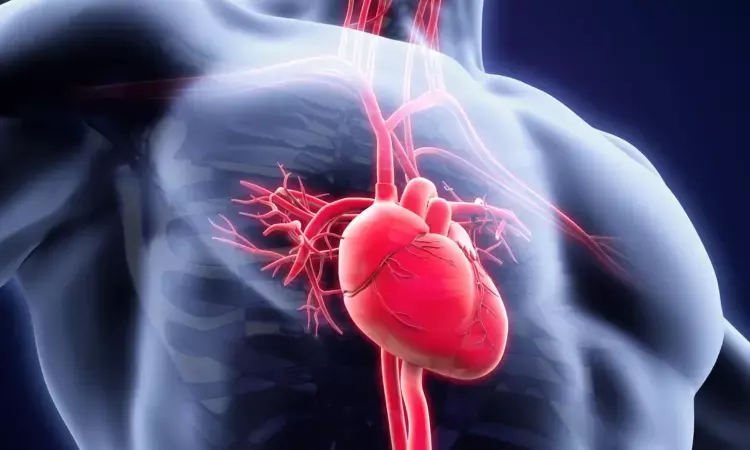- Home
- Medical news & Guidelines
- Anesthesiology
- Cardiology and CTVS
- Critical Care
- Dentistry
- Dermatology
- Diabetes and Endocrinology
- ENT
- Gastroenterology
- Medicine
- Nephrology
- Neurology
- Obstretics-Gynaecology
- Oncology
- Ophthalmology
- Orthopaedics
- Pediatrics-Neonatology
- Psychiatry
- Pulmonology
- Radiology
- Surgery
- Urology
- Laboratory Medicine
- Diet
- Nursing
- Paramedical
- Physiotherapy
- Health news
- Fact Check
- Bone Health Fact Check
- Brain Health Fact Check
- Cancer Related Fact Check
- Child Care Fact Check
- Dental and oral health fact check
- Diabetes and metabolic health fact check
- Diet and Nutrition Fact Check
- Eye and ENT Care Fact Check
- Fitness fact check
- Gut health fact check
- Heart health fact check
- Kidney health fact check
- Medical education fact check
- Men's health fact check
- Respiratory fact check
- Skin and hair care fact check
- Vaccine and Immunization fact check
- Women's health fact check
- AYUSH
- State News
- Andaman and Nicobar Islands
- Andhra Pradesh
- Arunachal Pradesh
- Assam
- Bihar
- Chandigarh
- Chattisgarh
- Dadra and Nagar Haveli
- Daman and Diu
- Delhi
- Goa
- Gujarat
- Haryana
- Himachal Pradesh
- Jammu & Kashmir
- Jharkhand
- Karnataka
- Kerala
- Ladakh
- Lakshadweep
- Madhya Pradesh
- Maharashtra
- Manipur
- Meghalaya
- Mizoram
- Nagaland
- Odisha
- Puducherry
- Punjab
- Rajasthan
- Sikkim
- Tamil Nadu
- Telangana
- Tripura
- Uttar Pradesh
- Uttrakhand
- West Bengal
- Medical Education
- Industry
Simultaneous hybrid CMR/FDG-PET imaging useful for cardiac sarcoidosis detection: Study

Germany: Simultaneous hybrid CMR/FDG-PET imaging is an optimal noninvasive tool for the detection of cardiac sarcoidosis (CS) and additionally identifies active disease, a recent study has found. The results, published in the journal JACC: Cardiovascular Imaging, may have implications for enhanced diagnosis and improved identification of active (aCS) patients in whom anti-inflammatory therapy may be most beneficial.
FDG-PET and late gadolinium enhancement (LGE) CMR are both established imaging techniques for CS detection. However, there is not much data on the value of a comprehensive simultaneous hybrid CMR/FDG-PET imaging approach that includes CMR mapping techniques.
Simon Greulich, Department of Cardiology and Angiology, University of Tübingen, Tübingen, Germany, and colleagues performed the study with an objective to investigate the diagnostic value of simultaneous hybrid cardiac magnetic resonance (CMR) and 18F-fluorodeoxyglucose positron emission tomography (FDG-PET) for detection and differentiation of active (aCS) from chronic (cCS) cardiac sarcoidosis.
For achieving their objective, the researchers prospectively enrolled 43 patients with biopsy-proven extracardiac sarcoidosis (median age: 48 years, 65% male) for evaluation of suspected CS. Patients were evaluated on a 3-T hybrid PET/MR scanner after dietary preparation for suppression of myocardial glucose metabolism. The CMR protocol included T1 and T2 mapping, myocardial function, and LGE imaging.
The researchers assumed aCS if PET and CMR (ie, LGE or T1/T2 mapping) were both positive (PET+/CMR+), cCS if PET was negative but CMR was positive (PET−/CMR+), and no CS if patients were CMR negative regardless of PET findings.
Based on the study, the researchers found the following:
- Among the 43 patients, myocardial glucose uptake was suppressed successfully in 36 (84%).
- Hybrid CMR/FDG-PET revealed aCS in 36% patients, cCS in 14% patients, and no CS in 50% patients.
- LGE was present in 39% of patients; T1 mapping was abnormal in 27% of patients and T2 mapping was abnormal in 6% of patients.
- CS was diagnosed based on abnormal T1 mapping in 4 out of 18 CS patients (22%) who were LGE negative.
- PET FDG uptake was present in 47% of patients.
Reference:
The study titled, "Hybrid Cardiac Magnetic Resonance/Fluorodeoxyglucose Positron Emission Tomography to Differentiate Active From Chronic Cardiac Sarcoidosis," is published in the journal JACC: Cardiovascular Imaging.
DOI: https://www.jacc.org/doi/10.1016/j.jcmg.2021.08.018
Dr Kamal Kant Kohli-MBBS, DTCD- a chest specialist with more than 30 years of practice and a flair for writing clinical articles, Dr Kamal Kant Kohli joined Medical Dialogues as a Chief Editor of Medical News. Besides writing articles, as an editor, he proofreads and verifies all the medical content published on Medical Dialogues including those coming from journals, studies,medical conferences,guidelines etc. Email: drkohli@medicaldialogues.in. Contact no. 011-43720751


